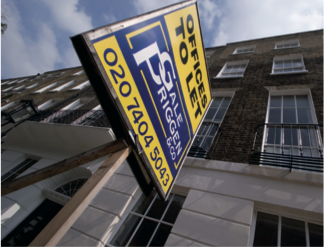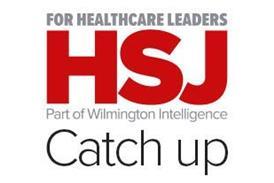There have been several changes to the way health provider estates have been owned and managed, but there is plenty of room for improvement. Bridget Archibald canvasses the changes

NHS Property Services
This article was part of the Commissioning Legal Adviser channel, in association with Mills & Reeve. The channel is no longer being updated.
No direct changes to providers’ estate have come about from the Health and Social Care Act, but reorganisation has meant that some providers have taken more freehold premises into their estate, or have agreed memoranda of occupation, licences or leases for accommodation.
However, current financial challenges, changes to commissioning structures and the increase in the number of services being put out to tender all have consequences on provider estate.
The commissioner or the provider can take the initiative to change service arrangements but, either way such changes can have an impact on premises utilisation.
Unaffordable safety
The combination of the renewed emphasis on quality from the Francis report, coupled with financial pressures and staffing level requirements, means that some providers are finding themselves unable to carry on with existing services because they cannot afford to safely continue with them.
This, in turn, means that there may be redundant parts of the estate that can be sold or used to provide an income. If disposal is not viable there can be the burden of the cost of those premises without the benefit of an income.
‘The anticipated windfall from being able to declare a property surplus may not materialise or may have to be shared’
Commissioners may put services out to the market. If the existing provider fails to win the tender there may again be surplus premises, unless the successful bidder is prepared to take them over.
Properties that passed to providers on 1 April 2013 under transfer schemes were subject to options and clawbacks in favour of the secretary of state for health, so the anticipated windfall from being able to declare a property surplus may not materialise or may have to be shared.
A case for diversification
The deepening financial challenge across the country has resulted in many healthcare providers struggling to balance the books. Depending on where the provider is situated, there is scope for its real estate to be used to produce income or capital.
‘Financial sustainability is so important, and how providers manage their estate is fundamental to diversification’
Many providers are looking at ways of diversifying the activities in operation on their estate. In some cases this may mean taking more advantage of the lifting of the former cap on private patient income, which may result in private patient accommodation being required.
Note there has been a report on private health provision by NHS providers which needs to be taken into account.
Diversification by other providers is more ambitious; some entering into joint ventures to provide research, education facilities, retail facilities and other accommodation. The stakes are higher than ever before as unsustainable projects can tip providers towards special administration.
The first insolvency of a trust - South London Healthcare - was rapidly followed by the administration of Mid Staffordshire, bringing home the message that financial sustainability is increadibly important, and how providers manage their estate is fundamental to that.
NHS Property Services’ challenge
On 1 April last year, NHS Property Services - a limited company wholly owned by the Department of Health - took ownership of almost 4,000 properties, with an aggregate value estimated to be in excess of £3bn.
This included the majority of the operational estate of dissolved primary care trusts and strategic health authorities.
So far, the company has sold or exchanged contracts on more than 100 properties and has identified a further 100 for disposal in the coming year. Put in financial terms, it has already realised almost £25m of savings through disposals and has declared that, over the two years to April 2015, it will save the NHS more than £12m in holding costs.
We have the first signs of what NHS Property Services may be able to achieve in the future.
New approved developments include a child development centre in Medway, a scheme in Hillingdon and the commitment of £2m to property improvements in the Midlands and the East.
All of this will help tackle problems as diverse as inadequate disability access, insufficient car parking allocation and inefficient heating systems.
‘NHS Property Services’ commissioner partners will need to lend enough support and appropriate funding to ensure it can come of age’
When the company was set up there was a high level agreement that it would cover its operational costs from the receipts from its tenants, including NHS England and clinical commissioning groups.
However, its annual running costs for 2013-14 are £700-800m and receipts from occupiers have been slow to materialise.
NHS Property Services has a significant challenge to regularise occupational interests and to increase rents to proper commercial levels, but this will be essential to building its future.
NHS occupiers of all shapes and sizes will no doubt be keen to resist increases and the NHS is again facing the issue of public money going back and forth.
As the NHS Property Services brings its business objectives into focus, it has also been necessary for it to rationalise the inherited workforce of 3,000 staff that it inherited from the PCTs and SHAs through a programme of business redesign.
For the company to be fully accepted as integral to the NHS, it is seeking to demonstrate it can bring tangible improvements to the management of property assets and deliver real savings that can be reinvested into the health service.
The immediate task is to consolidate its financial and operational position and then to maintain a clear direction for the future. Its commissioner partners will need to lend enough support and appropriate funding to ensure it can come of age as a fully fledged part of the NHS family.
Public-private partnerships
There are many other owners of the estate used for healthcare services. How are they faring and what do their futures hold?
With around 50 lift companies owning 200 facilities across the country, this represents a not insignificant part of primary and community care estate. Remember these companies are true public-private partnerships with 40 per cent owned by Community Health Partnerships - like NHS Property Services, this is wholly owned by the DH.
We have witnessed a significant amount of anxiety around the new processes for approval of schemes for new developments following the reforms.
‘The drive to promote more services locally hasn’t been matched with funding commitments that would underpin investment in extending GP premises’
NHS England area teams have to re-evaluate schemes they have inherited from PCTs. This has meant projects taking longer to get to fruition and - in the current financial climate - only high priority schemes are getting approval.
The same process however applies to schemes brought forward by NHS Property Services and under the local improvement finance trust scheme.
In theory, there may be interesting opportunities for GPs to develop premises to enable more services to be provided locally in the community.
As primary care reforms start to take place, this could be an expanding area of estate activity. However, so far the drive to promote more services locally has not been matched with funding commitments that would underpin investment in extending GP premises.
Bridget Archibald is partner and head of health at Mills & Reeve

























1 Readers' comment